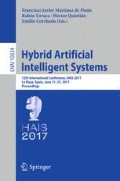Abstract
We present a parallel 2D version of a simplified semi-physical wildland fire spread model based on conservation equations, with convection and radiation as the main heat transfer mechanisms. This version includes some 3D effects. The OpenMP framework allows distributing the prediction operations among the available threads in a multicore architecture, thereby reducing the computational time and obtaining the prediction results much more quickly. The results from the experiments using data from a real fire in Galicia (Spain) confirm the benefits of using the parallel version.
Access this chapter
Tax calculation will be finalised at checkout
Purchases are for personal use only
References
Amdahl, G.M.: Validity of the single processor approach to achieving large scale computing capabilities. In: Proceedings of the April 18–20, 1967, Spring Joint Computer Conference, AFIPS 1967 (Spring), pp. 483–485, New York, NY, USA. ACM (1967)
Anderson, H.E.: Aids to determining fuel models for estimating fire behavior. General Technical Report INT-122, U.S. Department of Agriculture, Forest Service, Intermountain Forest and Range Experiment Station (1982)
Andrews, P.L.: BEHAVE: fire behavior prediction and fuel modeling system-BURN subsystem, Part 1. U.S. Department of Agriculture, Forest Service, Intermountain Research Station Ogden, UT (1986)
Arca, B., Ghisu, T., Spataro, W., Trunfio, G.A.: GPU-accelerated optimization of fuel treatments for mitigating wildfire hazard. Procedia Comput. Sci. 18, 966–975 (2013)
Asensio, M.I., Ferragut, L., Simon, J.: A convection model for fire spread simulation. Appl. Math. Lett. 18(6), 673–677 (2005). Special issue on the occasion of MEGA 2003
Cascón, J.M., Engdahl, Y.A., Ferragut, L., Hernández, E.: A reduced basis for a local high definition wind model. Comput. Methods Appl. Mech. Eng. 311, 438–456 (2016)
Cencerrado, A., Artés, T., Cortés, A., Margalef, T.: Relieving uncertainty in forest fire spread prediction by exploiting multicore architectures. Procedia Comput. Sci. 51, 1752–1761 (2015)
Esvensen, G.: Data Assimilation, The Ensemble Kalman Filter. Springer, Heidelberg (2009)
Ferragut, L., Asensio, M.I., Cascón, J.M., Prieto, D.: A simplified wildland fire model applied to a real case. In: Casas, F., Martinez, V. (eds.) Advances in Differential Equations and Applications, pp. 155–167. Springer International Publishing, Cham (2014)
Ferragut, L., Asensio, M.I., Cascón, J.M., Prieto, D.: A wildland fire physical model well suited to data assimilation. Pure Appl. Geophys. 172(1), 121–139 (2015)
Ferragut, L., Asensio, M.I., Monedero, S.: Modelling radiation and moisture content in fire spread. Commun. Numer. Methods Eng. 23(9), 819–833 (2007)
Ferragut, L., Asensio, M.I., Simon, J.: High definition local adjustment model of 3D wind fields performing only 2D computations. Int. J. Numer. Methods Biomed. Eng. 27(4), 510–523 (2011)
Graham, S.L., Kessler, P.B., Mckusick, M.K.: Gprof: a call graph execution profiler. In: SIGPLAN Notices, vol. 17, no. 6, pp. 120–126 (1982)
Innocenti, E., Silvani, X., Muzy, A., Hill, D.R.C.: A software framework for fine grain parallelization of cellular models with OpenMP: application to fire spread. Environ. Model. Softw. 24(7), 819–831 (2009)
Itzkowitz, M., Mazurov, O., Copty, N., Lin, Y.: An OpenMP runtime API for profiling. Sun Microsystems, Inc., OpenMP ARB White Paper. http://www.compunity.org/futures/omp-api.html
Mandel, J., Bennethum, L.S., Beezley, J.D., Coen, J.L., Douglas, C.C., Kim, M., Vodacek, A.: A wildfire model with data assimilation. Math. Comput. Simul. 79, 584–606 (2008)
MPI Forum. Message Passing Interface (MPI) Forum Home Page, December 2009. http://www.mpi-forum.org/
Pastor, E., Zárate, L., Planas, E., Arnaldos, J.: Mathematical models and calculation systems for the study of wildland fire behaviour. Prog. Energy Combust. Sci. 29(2), 139–153 (2003)
Perry, G.L.W.: Current approaches to modelling the spread of wildland fire: a review. Prog. Phys. Geogr. 22(2), 222–245 (1998)
Prieto, D., Asensio, M.I., Ferragut, L., Cascón, J.M.: Sensitivity analysis and parameter adjustment in a simplified physical wildland fire model. Adv. Eng. Softw. 90, 98–106 (2015)
Scott, J.H., Burgan, R.E.: Models, standard fire behavior Fuel : a comprehensive set for use with Rothermel’s surface fire spread model. General Technical Report RMRS-GTR-153, U.S. Department of Agriculture, Forest Service, Rocky Mountain Research Station (2005)
Sullivan, A.L.: Wildland surface fire spread modelling, 1990–2007. 1: physical and quasi-physical models. Int. J. Wildland Fire 18(4), 349–368 (2009)
Sullivan, A.L.: Wildland surface fire spread modelling, 1990–2007. 2: empirical and quasi-empirical models. Int. J. Wildland Fire 18(4), 369–386 (2009)
Sullivan, A.L.: Wildland surface fire spread modelling, 1990–2007. 3: simulation and mathematical analogue models. Int. J. Wildland Fire 18(4), 387–403 (2009)
Acknowledgement
This work has been partially supported by the Department of Education of the regional government, the Junta of Castilla y León, Grant contract: SA020U16. The authors are also grateful to Arsenio Morillo Rodríguez chief of the forest prevention and valorization area of the regional government, the Xunta de Galicia, for his technical support providing all the necessary information about the Osoño fire.
Author information
Authors and Affiliations
Corresponding author
Editor information
Editors and Affiliations
Rights and permissions
Copyright information
© 2017 Springer International Publishing AG
About this paper
Cite this paper
Álvarez, D., Prieto, D., Asensio, M.I., Cascón, J.M., Ferragut, L. (2017). Parallel Implementation of a Simplified Semi-physical Wildland Fire Spread Model Using OpenMP. In: Martínez de Pisón, F., Urraca, R., Quintián, H., Corchado, E. (eds) Hybrid Artificial Intelligent Systems. HAIS 2017. Lecture Notes in Computer Science(), vol 10334. Springer, Cham. https://doi.org/10.1007/978-3-319-59650-1_22
Download citation
DOI: https://doi.org/10.1007/978-3-319-59650-1_22
Published:
Publisher Name: Springer, Cham
Print ISBN: 978-3-319-59649-5
Online ISBN: 978-3-319-59650-1
eBook Packages: Computer ScienceComputer Science (R0)

